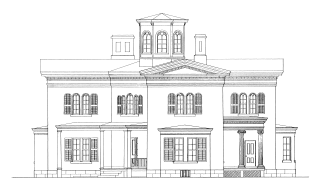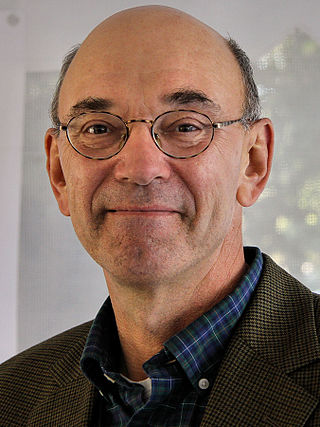Related Research Articles

Berkeley Plantation, one of the first plantations in America, comprises about 1,000 acres (400 ha) on the banks of the James River on State Route 5 in Charles City County, Virginia. Berkeley Plantation was originally called Berkeley Hundred, named after the Berkeley Company of England. In 1726, it became the ancestral home of the Harrison family of Virginia, after Benjamin Harrison IV located there and built one of the first three-story brick mansions in Virginia. It is the home to two presidents of the United States: William Henry Harrison, and his grandson Benjamin Harrison. It is now a museum property, open to the public.

Patrick County is a county located on the central southern border of the Commonwealth of Virginia. As of the 2020 census, the population was 17,608. Its county seat is Stuart. It is located within both the rolling hills and valleys of the Piedmont Region and the more mountainous Southwest Virginia.

Martinsville is an independent city in the Commonwealth of Virginia in the United States. As of the 2020 census, the population was 13,485. A community of both Southside and Southwest Virginia, it is the county seat of Henry County, although the two are separate jurisdictions. The Bureau of Economic Analysis combines the city of Martinsville with Henry County for statistical purposes.

Henry County is a county located in the U.S. state of Virginia. As of the 2020 census, the population was 50,948. The county seat is usually identified as Martinsville; however, the administration building, county courthouse, and Henry County Sheriff's Office are located on Kings Mountain Road in Collinsville.The Henry County Adult Detention Center is located on DuPont Road in Martinsville.

Charles City County is a county located in the U.S. commonwealth of Virginia. The county is situated southeast of Richmond and west of Jamestown. It is bounded on the south by the James River and on the east by the Chickahominy River.
Chatmoss is a census-designated place (CDP) in Henry County, Virginia, United States. The population was 1,698 at the 2010 census, down slightly from the 1,742 reported in 2000. It is part of the Martinsville Micropolitan Statistical Area.

Cooleemee, also known as the Cooleemee Plantation House, is a house located between Mocksville and Lexington, North Carolina, at the terminus of SR 1812 on the Yadkin River in Davie County, North Carolina. It is a U.S. National Historic Landmark, designated in 1978 for its architecture.

Stratford Hall is a historic house museum near Lerty in Westmoreland County, Virginia. It was the plantation house of four generations of the Lee family of Virginia. Stratford Hall is the boyhood home of two Founding Fathers of the United States and signers of the Declaration of Independence, Richard Henry Lee (1732–1794), and Francis Lightfoot Lee (1734–1797). Stratford Hall is also the birthplace of Robert E. Lee (1807–1870), who served as General-in-Chief of the Confederate States Army during the American Civil War (1861–1865). The Stratford Hall estate was designated a National Historic Landmark in 1960, under the care of the National Park Service in the U.S. Department of the Interior.

James Madison Hemings was the son of the mixed-race enslaved woman Sally Hemings and her enslaver, President Thomas Jefferson. He was the third of her four children to survive to adulthood. Born into slavery, according to partus sequitur ventrem, Hemings grew up on Jefferson's Monticello plantation, where his mother was enslaved. After some light duties as a young boy, Hemings became a carpenter and fine woodwork apprentice at around age 14 and worked in the joiner's shop until he was about 21. He learned to play the violin and was able to earn money by growing cabbages. Jefferson died in 1826, after which Sally Hemings was "given her time" by Jefferson's surviving daughter Martha Jefferson Randolph.

Henry Wiencek is an American journalist, historian and editor whose work has encompassed historically significant architecture, the Founding Fathers, various topics relating to slavery, and the Lego company. In 1999, The Hairstons: An American Family in Black and White, a biographical history which chronicles the racially intertwined Hairston clan of the noted Cooleemee Plantation House, won the National Book Critics Circle Award for biography.

Colonel John Custis IV was an American planter, politician, government official and military officer who sat in the House of Burgesses from 1705 to 1706 and 1718 to 1719, representing the electoral constituencies of Northampton County and the College of William & Mary. A prominent member of the Custis family of Virginia, he utilized his extensive landholdings to support a career in horticulture and gardening.

Beaver Creek Plantation, under the ownership of George Hairston, was a large slave-holding tobacco plantation and the center of an empire in tobacco-growing and slave-trading built by the Hairston family, Scottish emigrants to Pennsylvania in the early 18th century. Located just outside today's Martinsville, Virginia, the plantation thrived in tobacco production and textile manufacturing, as well as producing household goods and raising livestock. At one point the enslaved blacks of Beaver Creek were tending a thousand yam plants; in one day they made 660 candles.

Richard Randolph, also known as Richard Randolph of Curles, was a planter, merchant and politician in colonial Virginia. Richard served as a member of the Virginia House of Burgesses from 1727 until his death. Randolph was the fifth son of William Randolph and Mary Isham, as well as the grandfather of John Randolph of Roanoke. He was also recommended for appointment to the Governor's Council of Virginia four times but never received an appointment. Through his marriage to Jane Bolling, his children were lineal descendants of Pocahontas.

Jubal Anderson Early was a Virginia lawyer and politician who became a Confederate general during the American Civil War. Trained at the United States Military Academy, Early resigned his U.S. Army commission after the Second Seminole War and his Virginia military commission after the Mexican–American War, in both cases to practice law and participate in politics. Accepting a Virginia and later Confederate military commission as the American Civil War began, Early fought in the Eastern Theater throughout the conflict. He commanded a division under Generals Stonewall Jackson and Richard Ewell, and later commanded a corps. A key Confederate defender of the Shenandoah Valley, during the Valley Campaigns of 1864, Early made daring raids to the outskirts of Washington, D.C., and as far as York, Pennsylvania, but was crushed by Union forces under General Philip Sheridan, losing over half his forces. After the war, Early fled to Mexico, then Cuba and Canada, and upon returning to the United States took pride as an "unrepentant rebel." Particularly after the death of Gen. Robert E. Lee in 1870, Early delivered speeches establishing the Lost Cause position. Early helped found the Southern Historical Society and memorial associations.

Bel Air Manor is a colonial-era plantation manor located in Minnieville, Prince William County, Virginia. Built in 1740 as the Ewell family seat, the home was regularly visited by Thomas Jefferson and George Washington, who was a cousin. It later served as the home of Mason Locke Weems (1759–1825), the first biographer of George Washington and the creator of the cherry tree story. Extraordinarily well preserved for its age, Bel Air was added to the National Register of Historic Places in 1970. Today, Bel Air remains a private residence and a working farm. Bel Air is not to be confused with "Bel Aire", a similarly named house five miles to the east.

Cedar Grove is a historic plantation house located near Edgefield, Edgefield County, South Carolina. It was built between 1790 and 1805, and is a large two-story, Federal style house with a white clapboard exterior and high gable roof. It features a double-tiered portico with delicate Adamesque detail. This home has many unusual architectural features including a barrel-vaulted hallway, elaborately carved mantelpieces, and the right front parlor retains an early hand-painted French wallpaper.
Leatherwood Plantation of 10,000 acres was located in Henry County, Virginia, where American Founding Father Patrick Henry lived from 1779 until 1784. The plantation is probably named after Leatherwood Creek, a tributary to the Smith River (Virginia), which ran through the property.
Robert Hairston was an 18th-century gentleman planter, politician, and military officer in the Virginia Colony. He was an elected representative in both the House of Burgesses and the Virginia House of Delegates.
George Hairston was a noted planter and politician in Virginia. He was a Colonel in the American Revolutionary War and a Brigadier General in the War of 1812.

West Ford was the caretaker and manager of Mount Vernon, which had been the home of George Washington. Ford also founded Gum Springs, Virginia near Mount Vernon. He was a man of mixed-race, and possibly of Washington descent.
References
- ↑ Wiencek, Henry. The Hairstons: An American Family in Black and White. New York: St. Martin's Press, 1999. Page 45.
- ↑ "History of Patrick and Henry Counties, Virginia". by Virginia G. Pedigo and Lewis Gravely Pedigo. 1933. Page 148.
- ↑ "Robert Hairston."
- ↑ Wiencek, Henry. The Hairstons: An American Family in Black and White. New York: St. Martin's Press, 1999. Page 45.